By Senzeal | 04 September 2019 | 0 Comments
Java Moss, One of the Easiest Aquatic Plant
Today, we are going to introduce you to a kind of aquatic plant that is easy to be kept and also cost-effective! It is the java moss.
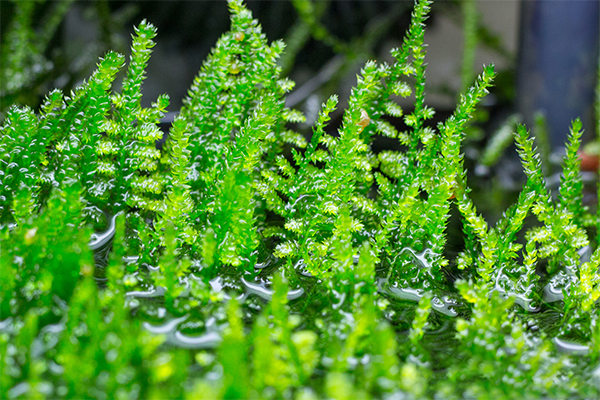
1.Java moss feature
Cultivation level: super easy
Reproduction way: lateral branching
Light: aquarium light over 20W or low light
CO2: no special CO2 requirement, but if you add CO2 it can grow better
Water temperature: 10℃-28℃
Aquarium Substrate: sand, plant mud and so on
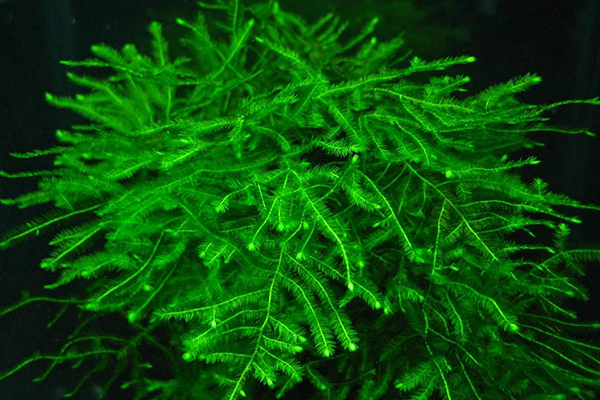
Java moss does not need to be planted into the soil like many other aquatic plants. You can simply keep it in the water. It can also survive without adding extra CO2. Besides, it is cheap and very easy to be kept so new aquatic plant keepers always love to keep it. In addition, java moss is also widely used in aquascaping. Moss balls, moss carpets, moss walls, and so on, java moss can help you to achieve them. However, if you keep a planted aquarium, we suggest you use an Aquarium CO2 Bubble Counter, which can decompose CO2 into small, fine bubbles and increase CO2 dissolution rate and improve its diffusion efficiency.
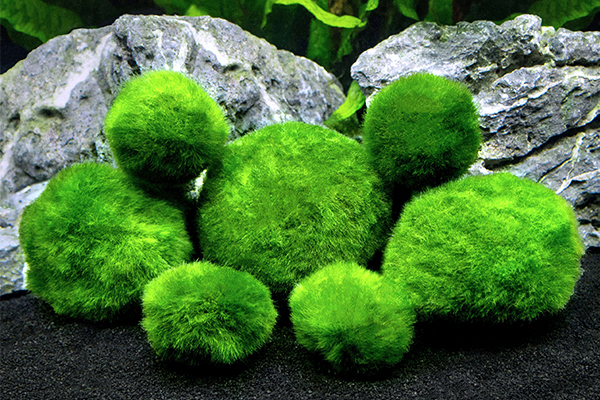
2.Java moss fixation
Java moss survives by absorbing nutrients in the water, so they can meet their survival needs by being put in water. There are no specific requirements for their attached objects, and objects can be selected according to the aquascaping needs. The Moss line is recommended to be used by fixing java moss. The moss line is not only easy to break but also transparent without affecting the viewing effect.
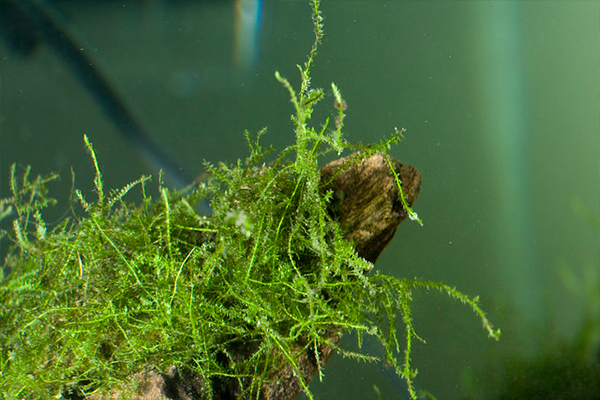
First, the java moss needs to be trimmed to about 1 cm length, and the part that moss is cut will grow sprouts after a while. Put them in a bucket and let them pass through the water to facilitate their fixation. Then, lay a thin layer of java moss on the surface of objects such as driftwood and rocks. You cannot lay a thick layer because it will become hard for them to receive the light, which might cause them to rot. For example, simply twine java moss on driftwood with moss lines at a distance of 5 mm, and then trim the longer part of java moss.
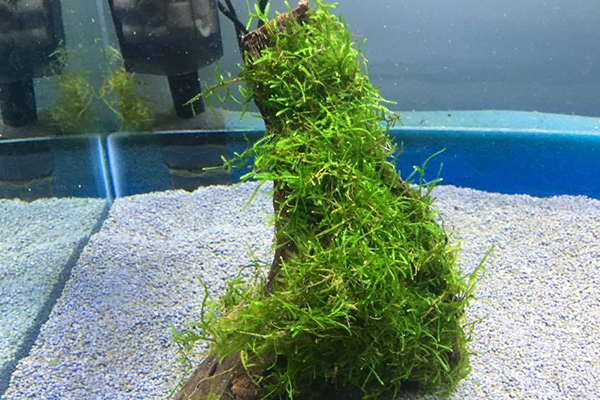
Before putting the driftwood with fixed java moss into your aquarium, put it into the bucket and gently shake it a few times to filter out the unfixed moss and avoid cleaning the fish tank. Put java moss in the aquarium where it is easy to receive light, and it will grow better. For getting light better, we suggest you use this X9 Aquarium Light with LCD Temperature, which can detect temperature and adjust brightness as well. It even has white and blue light, and the blue light is good for plants and fishes at night.
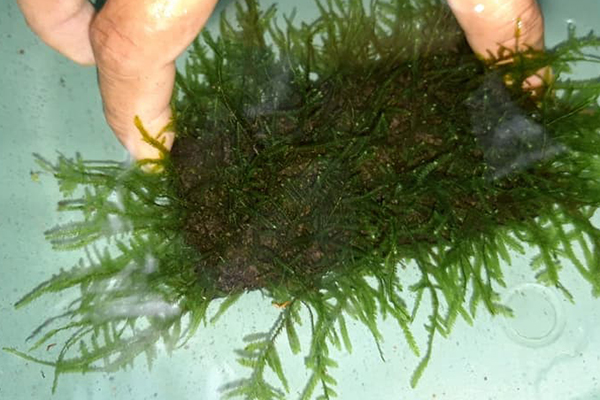
3.Java moss trimming
If you want your java moss to thrive, you need to trim them regularly. Java moss planted on the stone can be directly removed and trimmed. After trimming, remember to put it in the bucket and filter the dropped moss before putting it back into the fish tank. The java moss attached to the driftwood can be trimmed in tank with an aquatic scissor. Generally, the aquatic plants can be kept at a length of about 3cm. The cut moss can be tied to other attachments again.
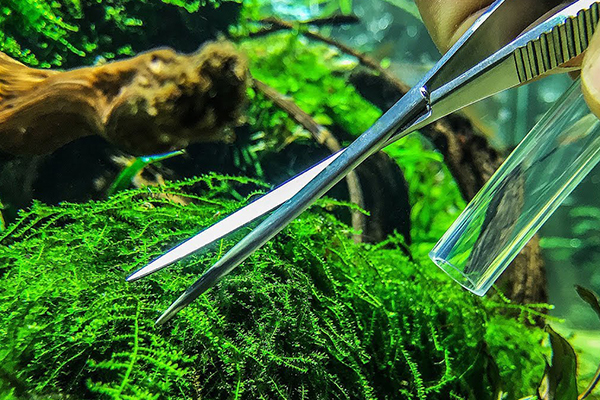
You may also want to read:
What is the Green Algae Ball and How to Keep It?
How to Keep the Amazon Sword?
The Temperature of Keeping Aquatic Plants
Five Reasons of Why Aquatic Plants Turn Yellow

1.Java moss feature
Cultivation level: super easy
Reproduction way: lateral branching
Light: aquarium light over 20W or low light
CO2: no special CO2 requirement, but if you add CO2 it can grow better
Water temperature: 10℃-28℃
Aquarium Substrate: sand, plant mud and so on

Java moss does not need to be planted into the soil like many other aquatic plants. You can simply keep it in the water. It can also survive without adding extra CO2. Besides, it is cheap and very easy to be kept so new aquatic plant keepers always love to keep it. In addition, java moss is also widely used in aquascaping. Moss balls, moss carpets, moss walls, and so on, java moss can help you to achieve them. However, if you keep a planted aquarium, we suggest you use an Aquarium CO2 Bubble Counter, which can decompose CO2 into small, fine bubbles and increase CO2 dissolution rate and improve its diffusion efficiency.

2.Java moss fixation
Java moss survives by absorbing nutrients in the water, so they can meet their survival needs by being put in water. There are no specific requirements for their attached objects, and objects can be selected according to the aquascaping needs. The Moss line is recommended to be used by fixing java moss. The moss line is not only easy to break but also transparent without affecting the viewing effect.

First, the java moss needs to be trimmed to about 1 cm length, and the part that moss is cut will grow sprouts after a while. Put them in a bucket and let them pass through the water to facilitate their fixation. Then, lay a thin layer of java moss on the surface of objects such as driftwood and rocks. You cannot lay a thick layer because it will become hard for them to receive the light, which might cause them to rot. For example, simply twine java moss on driftwood with moss lines at a distance of 5 mm, and then trim the longer part of java moss.

Before putting the driftwood with fixed java moss into your aquarium, put it into the bucket and gently shake it a few times to filter out the unfixed moss and avoid cleaning the fish tank. Put java moss in the aquarium where it is easy to receive light, and it will grow better. For getting light better, we suggest you use this X9 Aquarium Light with LCD Temperature, which can detect temperature and adjust brightness as well. It even has white and blue light, and the blue light is good for plants and fishes at night.

3.Java moss trimming
If you want your java moss to thrive, you need to trim them regularly. Java moss planted on the stone can be directly removed and trimmed. After trimming, remember to put it in the bucket and filter the dropped moss before putting it back into the fish tank. The java moss attached to the driftwood can be trimmed in tank with an aquatic scissor. Generally, the aquatic plants can be kept at a length of about 3cm. The cut moss can be tied to other attachments again.

You may also want to read:
What is the Green Algae Ball and How to Keep It?
How to Keep the Amazon Sword?
The Temperature of Keeping Aquatic Plants
Five Reasons of Why Aquatic Plants Turn Yellow
Leave a Reply
Your email address will not be published.Required fields are marked. *
CATEGORIES
- Aquarium Knowledge
- Aquarium Fishes
- Aquatic Plants
- Other Aquatic Creatures
- Best Aquarium Products
- Aquarium Light
- Aquarium Feeding Knowledge
- Fish Tank & Turtle Tank
- Aquarium Cleaning
- Fish Breeding
- Aquarium Heater
- Aquarium Filtration
- Planted Tank CO2
- Aquarium Decoration
- Shrimp Knowledge
- Aquascaping
- Algae
- Guppy
- Goldfish
- KOI
- Turtle
- Angelfish
- Betta
- Arowana
- Anemone
- Snails
- Fish Keeping
- Tropical
TAGS